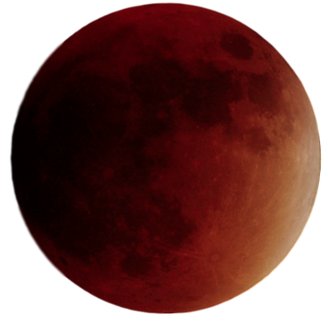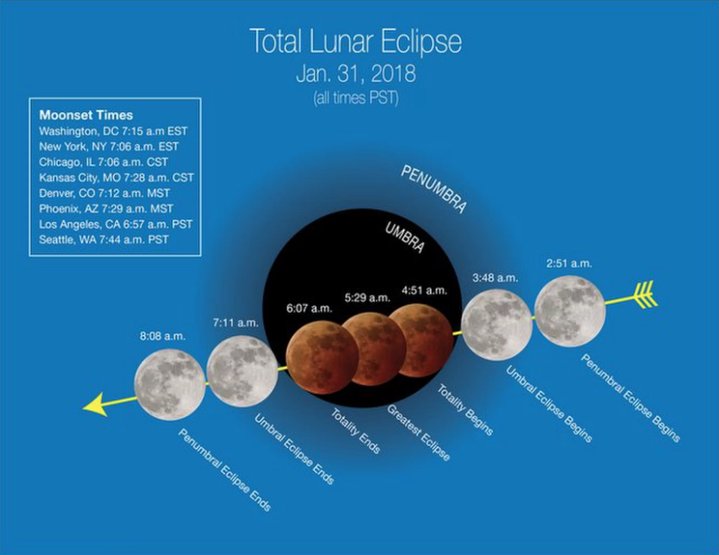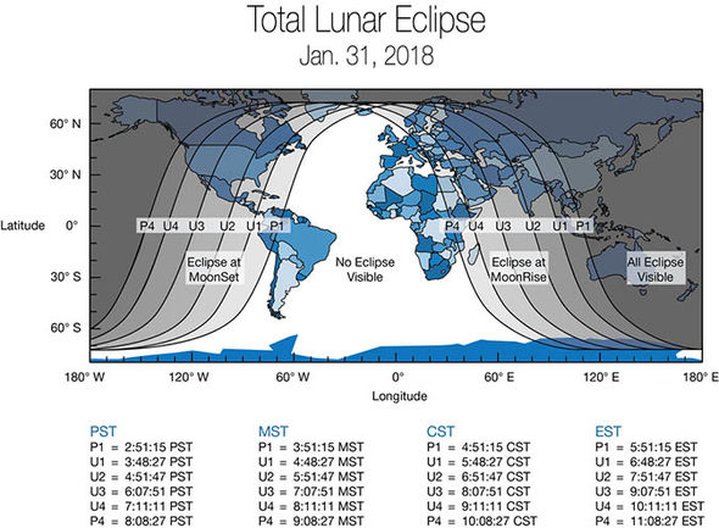I mean, sure, it’s Humboldt, where ogling sky events is always iffy — remember waking up for last year’s fog-clipse, Eureka? Somehow oddly satisfying — but, Jah willing, we all are technically due a Wednesday morning celestial oddity.

Lucky for us, the West Coast is arguably the best coast on which to view the rare (deep, reverb-ed voice, now) “SUPER BLUE BLOOD MOON,” a heavenly three-fer combining:
- A super moon - The period when the Moon is closest to the earth in its elliptic orbit, meaning it appears bigger and brighter than normal; there are usually 3-4 each year,
- A blue moon - A second full moon to occur in a calendar month; occurs every 2.7 years,
- A total lunar eclipse (blood moon) - When the moon passes into the earth’s umbra (science-y word for “shadow”) and is shielded from the sun creating a deep-red hue on the surface; the number of total lunar eclipses in a year varies; there were none in 2017, this year there are two.
How rare is it that the moon scores this particular hat trick? The last “Super Blue Blood Moon” lined up on Dec. 30, 1982. The last time one was visible in North America was March 31, 1866.

When to look up | NASA
Now, if you want a chance at catching this sky show you’ll have to set an alarm on your smart phone (or, if you’re like LoCO, several alarms spaced minutes apart). Early bird gets the blood moon. Overachievers can first watch the earth’s shadow creep over the moon’s edge at 3:48 a.m. Normal people, on the other hand, are advised that totality (full coverage) starts around 4:51 a.m. and lasts until 6:08 a.m. If you need a giant red orb in your life, that’s your one-hour-and-17-minute window.
To be clear, weather reports suggest that it’ll be partially cloudy in coastal Humboldt tomorrow. If the SBBM is obscured, though, you have the option to resort to watching a webcast of the thing which you can find on NASA’s specifically moon-themed Twitter account.
Happy neck-craning, HumCo.

Your 2018 Super Blue Blood Moon Map | NASA
CLICK TO MANAGE